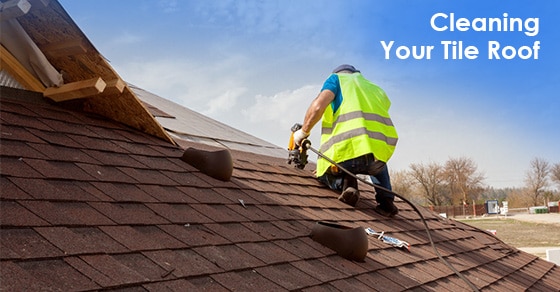
5 DIY Tips To Clean Your Tile Roof
Your roof protects your home from the elements, and should always be in top condition. Different tile roof materials, including metal, concrete, and synthetic tiles are designed to offer decades of service and are fit for a minimum of 50 years, while clay tiles last for a century or more. However, exposure and the usual wear and tear can dramatically affect the longevity of roofs.
Fortunately, proper cleaning techniques can help ensure that your tile roof serves you well. Here are some tips to clean your roof tiles:
- Get the necessary cleaning tools and equipment to clean your roof yourself. This includes a pressure washer with the recommended settings for your tiles; a sturdy ladder, preferably with foot stays; plywood to distribute your weight on the fragile tiles; shoes with good traction; cleaning chemicals; and the necessary primers, paint, and sealant to re-coat your tiles after cleaning.
- Mould, lichen, and other unsightly growths are not necessarily detrimental to the longevity of your tile roof. However, they can interfere with the free drainage of precipitation off the roof slope. When cleaning these growths, use a wire brush and a regulated biocide, or a low-pressure washer.
- Although a pressure washer is necessary for tile roof cleaning, inappropriate pressure washing can force water into the roof space, between the tiles and roofing felt. So, it is important that you not only use the recommended nozzles for the type of roof tile, but also get the right pressure washer setting. For clay and concrete tiles that have tiny spores, 1,200 to 1,500 psi (pounds per square inch) is enough to get rid of dirt and stains without damaging the surface.
- Regular cleaning of your roof can wear and peel away the paint and coating on your tiles. Newly cleaned surfaces are also prone to moisture, dirt, and damage. So, always re-coat the seal and apply paint to protect your tile roof from dirt and moss/mould infestation.
- There are many cleaning agents that you can use to make the cleaning process more efficient, though professional roof cleaners recommend that you use sodium-hydroxide-based products. This is because they are green, safer, and highly effective – similar to degreaser. Alternately, you can use chlorine and water solution for greater savings.
Lastly, cleaning the roof presents a great opportunity to repair minor damage. So, get some replacement tiles in case you need to replace cracked and loose tiles that get uncovered while cleaning.





